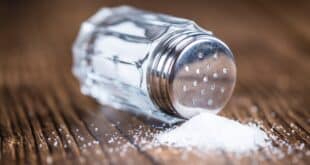Back in the fifties and sixties, our beverages were mainly water and milk. Hot beverages often stirred our morning brains or warmed us on cold mornings. On occasion we may have had an eight-ounce cup of soda or a sweetened drink such as fruit punch. Also, we mostly ate home cooked meals and… well, fast food was not on most folks’ radar.
High Fructose Corn Syrup
Since then, we have made a lot of changes. Today, it’s pretty common to see someone at a movie or baseball game guzzle a 32-ouncer of soda or wash down a salt laden snack with 24 ounces of cola for breakfast. Or it is common to swing through the drive-thru at fast food restaurants or grab-n-go eateries and choose processed meals with fructose. These habits introduced a large amount of fructose in our diets. One of the main sources of fructose is through a sweetener called high fructose corn syrup or HFCS.
In the past 20 – 40 years our intake of all sweeteners combined increased from 120 pounds to over 147 pounds each year.1 The introduction of HFCS influenced this increase. During this same period, our intake of HFCS went from virtually 0 to 42% of our total sweetener intake. Soda accounted for two-thirds of this increase but this increase also came from processed foods such as candy, candy bars, flavored yogurts, jellies, cereals and canned fruits.2
Why Did Manufacturers Increase HFCS?
Another reason why our fructose intake has increased is because our serving sizes of processed foods and drinks have gotten large… no, huge in some cases. HFCS has become the sweetener of choice by so many manufacturers and when we consume huge servings, our fructose intake increases. Why has the industry increased HFCS usage?
In 1966, manufacturers started adding HFCS to sodas and other foods instead of sugar because it blended easier than sugar, it was sweeter than sugar so they used less. Also it was cheaper than sugar, and it increased the shelf life of products. Manufacturers also varied the types of HFCS. For example, HFCS used in soda is made with 45% glucose – a common and simple form of sugar and 55% fructose. HFCS for processed and baked foods may have a higher percentage of fructose – 10% glucose and 90% fructose.
Whether a manufacturer uses table sugar, which is made from 50% glucose and 50% fructose or HFCS, the bottom line is that our consumption of sweeteners has increased and with it a drastic increase in fructose. The problem with getting so much fructose is that it increases our risk for obesity, heart disease and diabetes and here’s why.
How Fructose Increases Our Risk for Disease
First, let’s compare what happens when we digest glucose, a major source of fuel for our bodies, to fructose. When glucose enters our bodies, it stimulates insulin production. Insulin unlocks the door to our cells and glucose enters to be converted to energy. Part of insulin’s work is to increase a hormone called leptin. Leptin’s job is to turn off our appetites. Insulin helps to decrease another hormone called ghrelin. Ghrelin’s role is to increase our appetite.
Fructose is not handled in this way. The body treats fructose almost like a fat and it is processed through the liver. This route does not affect insulin, jumpstart leptin or turn off ghrelin. Unlike glucose, fructose does not send signals to the brain to say that we are satisfied. We tend to eat more food after a high fructose meal. Because of the additional fructose and calories, our weight increases. Also our cholesterol and triglycerides or fat in the blood increase.
What Should We Do?
The World Health Organization recommends that no more than ten percent of our total calories should come from added sugars.3 We can lower our intake by trying the following suggestions. Read labels and become familiar with food brands that contain HFCS and reduce them in our diets. Ask fast food restaurants for a list of foods that contain HFCS and reduce these foods in our diets. Replace soda with a nice glass of water at least half of the time until soda is only a small portion of total beverage intake. Replace desserts made with HFCS or high-sugared desserts with the fruit of the season. This helps reduce total fructose intake and fruit will add vitamins, minerals, fiber and other substances that support good health.
Becoming aware of what we eat and making healthy choices may keep us from the unhealthy trends associated with a high fructose intake. So, take control and make choices that reduce the risk of chronic diseases.
Pamela Williams writes from Southern California.
1Sweetener Consumption in the United States. USDA. Sss-243-01.http://www.ers.usda.gov/Publications/SSS/aug05/sss24301/sss24301.pdf Accessed August 24, 2007.
3WHO/FAO release independent Expert Report on diet and chronic disease. http://www.who.int/mediacentre/news/releases/2003/pr20/en/. /Accessed August 26, 2008.
 Answers for Me Support & encouragement for every-day life
Answers for Me Support & encouragement for every-day life



